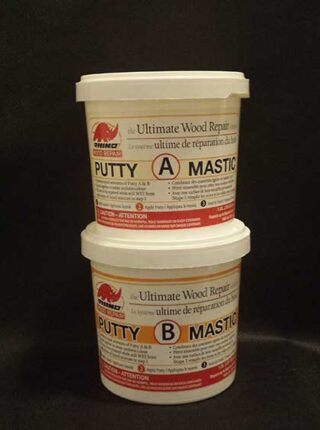
RHINO WOOD REPAIR
ASTM Test Results
With successful third-party structural testing conducted by the Engineering Department at the University of Waterloo, our structural ASTM results are accessible for printing by architects, engineers, inspectors, and professionals.
Structural ASTM Test Results
What is ASTM International?
ASTM International, formerly known as the American Society for Testing and Materials (ASTM), stands as a leading international standards organization. Established in 1898 and headquartered in West Conshohocken, Pennsylvania, ASTM develops and publishes voluntary consensus technical standards for a diverse array of materials, products, systems, and services.
ASTM’s inception arose from a need to address frequent rail breaks plaguing the burgeoning railroad industry. Led by Charles Benjamin Dudley, a group of scientists and engineers formulated standards for the steel used in rail fabrication. In 2001, the organization transitioned to its current name, ASTM International.
Standards by ASTM International
ASTM International standards encompass a broad spectrum and are classified into six categories:
Standard Specification: Defines requirements to be met by the subject of the standard.
Standard Test Method: Specifies the manner in which tests are conducted and the precision of the results.
Standard Practice: Outlines a sequence of operations, distinct from a Test Method, which does not yield a result.
Standard Guide: Presents an organized collection of information or options without endorsing a specific course of action.
Standard Classification: Groups materials, products, systems, or services based on shared characteristics such as origin, composition, properties, or use.
Terminology Standard: Offers agreed-upon definitions of terms used in other standards.
ASTM’s commitment to quality ensures that its standards are widely utilized worldwide. Industries ranging from construction to aerospace, automotive, healthcare, and consumer products rely on ASTM standards for their reliability and consistency.
Why Choose ASTM International Standards?
Global Recognition: ASTM standards enjoy global recognition and acceptance, signifying their importance across industries and regulatory bodies worldwide.
Industry Applications: ASTM standards are vital across various sectors, including construction, aerospace, automotive, healthcare, and consumer products.
Continuous Improvement: ASTM International continuously updates and revises its standards to reflect advancements in technology, materials, and methodologies.
Collaborative Approach: ASTM standards are developed collaboratively, involving industry experts, researchers, academics, and government representatives.
Certification and Compliance: Adhering to ASTM standards aids in certification processes and demonstrates compliance with regulatory requirements.
Resources and Support: ASTM International offers additional resources, including training programs, technical publications, and online databases, to support understanding and implementation of its standards.
In conclusion, ASTM International sets the benchmark for quality, reliability, and innovation in standards development. By choosing ASTM standards, you align your products and processes with globally recognized best practices, ensuring safety, quality, and performance.
Customer Reviews
David K.
⭐⭐⭐⭐⭐ “I couldn’t be happier with Rhino Wood Repair! Living in Meaford, I needed a reliable solution for my wooden window repairs. Rhino Wood Repair exceeded my expectations with its durability and ease of use. Restored my windows like new!”.
Matt M.
⭐⭐⭐⭐⭐ “Rhino Wood Repair is a game-changer! I used their products to restore my wooden windows, and the results were outstanding. Easy application and incredible durability. Highly recommend!”
Michael R.
⭐⭐⭐⭐⭐ “Exceptional product! I repaired the storm-damaged window sills in my house using Rhino Wood Repair. The transformation was remarkable. Sturdy, reliable, and saved me from costly replacements.”
 Frequently Asked Questions
Frequently Asked Questions Videos
Videos Colourful Chemist cooks up wood-repair product
Colourful Chemist cooks up wood-repair product Custom Adhesive Epoxies & Formulations
Custom Adhesive Epoxies & Formulations THE SIMPLE SOLUTION TO A DIFFICULT PROBLEM.
THE SIMPLE SOLUTION TO A DIFFICULT PROBLEM.




 Rhino Wood Repair for Log Homes Looking to combat wood rot on your log home? Enter Rhino Wood Repair — the vanguard of wood restoration, with a legacy spanning over three decades. Led by Robin Pixner, a visionary in the field of wood preservation, our mission is simple yet profound: to breathe new life into aging wood, to fortify its strength, and to ensure that the legacy of log homes endures for generations to come.
Rhino Wood Repair for Log Homes Looking to combat wood rot on your log home? Enter Rhino Wood Repair — the vanguard of wood restoration, with a legacy spanning over three decades. Led by Robin Pixner, a visionary in the field of wood preservation, our mission is simple yet profound: to breathe new life into aging wood, to fortify its strength, and to ensure that the legacy of log homes endures for generations to come. Wood Epoxy
Wood Epoxy


